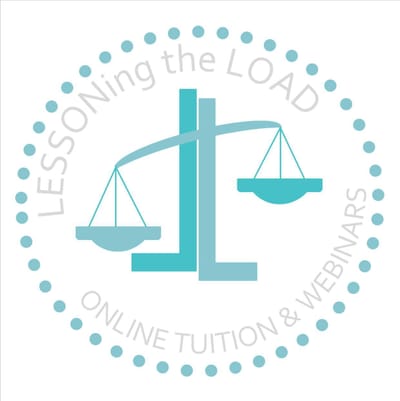Busting the Myth of Learning Styles: What Really Helps Students Learn
You’ve probably heard it before - 'My child’s a visual learner’ or ‘She just doesn’t get it unless she can do something hands-on.’ The idea that each person has a preferred ‘learning style’ - such as visual, auditory or kinaesthetic- has become deeply rooted in mainstream education, home education communities and even popular psychology. It’s comforting, in a way: if we can just find the ‘right’ style, learning will be easier, faster, more natural.
But here’s the surprising truth, something we explore in the GCSE Psychology course: there’s no strong scientific evidence that tailoring teaching to a student’s preferred learning style improves learning outcomes.
In this post, we’ll explore:
- What the learning styles theory is
- Why it’s so popular
- What research really says - including insights from cognitive scientist Daniel Willingham
- And what does actually help students learn more effectively
Whether you’re home-educating or supporting your child’s learning in other ways, understanding the reality behind this myth can empower you to take a more flexible, evidence-based approach.
What Are Learning Styles?
The learning styles theory suggests that individuals learn best when information is presented in a way that matches their preferred sensory mode. The most common model includes:
- Visual learners – prefer images, diagrams and spatial understanding
- Auditory learners – prefer listening to spoken information
- Kinaesthetic learners – prefer hands-on activities and movement
Some systems include even more categories (verbal, logical, interpersonal, etc.), but most boil down to these three.
The idea sounds plausible - and there’s certainly truth in the fact that people have preferences. Some children enjoy listening to audiobooks; others gravitate toward drawing or building. But preference isn’t the same as effectiveness.
Why Is the Learning Styles Myth So Popular?
There are a few reasons the idea has caught on:
- It feels personal: We all like to feel unique and understood, and the idea that we each have a special way of learning is appealing.
- It offers clarity and structure: Labelling a child as a ‘visual learner’ seems to give a neat explanation for their difficulties or preferences.
- It encourages variation in teaching: The model has inspired more creativity in lesson planning, which can be a good thing - just not for the reasons people think.
- It’s everywhere: Many books, websites and online quizzes reinforce the concept, even though it lacks scientific support.
But just because something is popular doesn’t mean it’s effective.

What Does the Research Say?
Over the past two decades, psychologists and educational researchers have rigorously tested the learning styles theory - and the results are strikingly consistent.
Cognitive scientist Daniel Willingham, a leading expert on how the brain learns, has been clear and direct on this topic. He explains that ‘the idea that individual learners benefit from instruction tailored to their preferred learning style has no credible evidence to support it.’
Willingham emphasises that effective learning depends more on the nature of the material itself than on catering to supposed learning styles.
A major review by Pashler et al. (2008) also concluded that there is no credible evidence that teaching to a student’s preferred learning style improves their learning outcomes.
In other words, just because a child says they prefer to learn by listening doesn’t mean they’ll remember material better if it’s delivered that way.
In fact, what matters most is matching the teaching method to the content. For example:
- Learning geometry? Diagrams are essential.
- Studying poetry? Hearing it aloud adds depth.
- Learning a science concept? A hands-on experiment might make it memorable.
Trying to force all content into one ‘style’ often limits understanding, rather than enhancing it.
What Actually Helps Learning?
So if learning styles don’t improve learning, what does? Here are five evidence-based principles you can use instead:
- Dual Coding
Combining words with visuals - like diagrams, timelines or mind maps - helps information stick. This is called dual coding, and it taps into how the brain processes both verbal and visual input together. - Spaced Repetition
Instead of cramming, revisit information regularly over time. This strengthens memory and understanding. For example, review a topic a day later, then a few days after that, then again in a week. - Retrieval Practice
Rather than re-reading notes, encourage your child to recall the information from memory - through quizzes, flashcards or simply explaining what they’ve learned out loud. This strengthens memory more effectively than passive review. - Interleaving
Mix up different topics during a study session instead of focusing on just one. This helps the brain make connections between ideas and improves problem-solving. - Elaboration
Encourage your child to make connections between new knowledge and what they already know. Asking ‘Why does this work?’ or ‘How does this relate to that other topic?’ deepens understanding.
These strategies work across all types of learners - not because they ‘match’ a learning style, but because they’re grounded in how memory and cognition actually function.
How to Support Learning at Home Without Relying on Styles
If your child has already been told they’re a ‘visual learner’ or they strongly identify with one style, you don’t need to reject it completely. Preferences can still guide how learning starts - but they shouldn’t limit it.
Here’s how to take a more balanced, effective approach at home:
- Use a mix of methods.
- Include visuals, spoken discussion, hands-on tasks, writing, movement, storytelling - whatever fits the topic and keeps learning engaging.
- Focus on the goal, not the label.
- Ask: ‘What’s the best way to understand this idea?’ rather than ‘What’s your learning style?’
- Be flexible and curious.
- Encourage your child to try new approaches and reflect on what helps them remember and apply ideas - not just what they like best.
- Talk about how learning works.
- Discuss memory, revision techniques and brain-friendly study habits. This helps build metacognition - thinking about one’s own learning - which is a key skill for independence.
Final Thoughts: Move Beyond Labels
While the learning styles myth may be well-intentioned, it can actually restrict learners by making them feel boxed into a particular way of thinking. Worse still, it can lead students to avoid certain tasks - ‘I’m not an auditory learner, so I’ll never be good at languages.’
The truth is, we all learn in multiple ways, depending on what we’re learning and how we approach it. The most effective learners are those who can adapt, experiment and use a range of strategies to deepen their understanding.
By moving beyond the learning styles myth and focusing on real, research-backed techniques, you can help your child become not just a more confident learner - but a more capable and resilient one, too.
